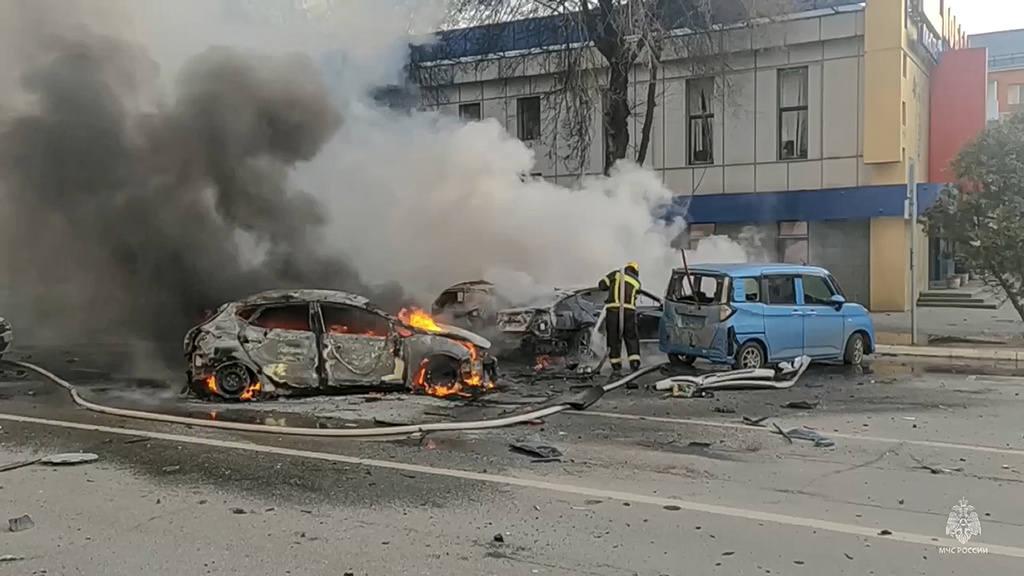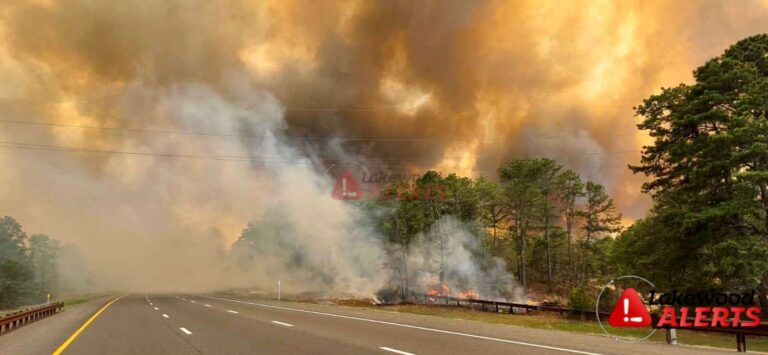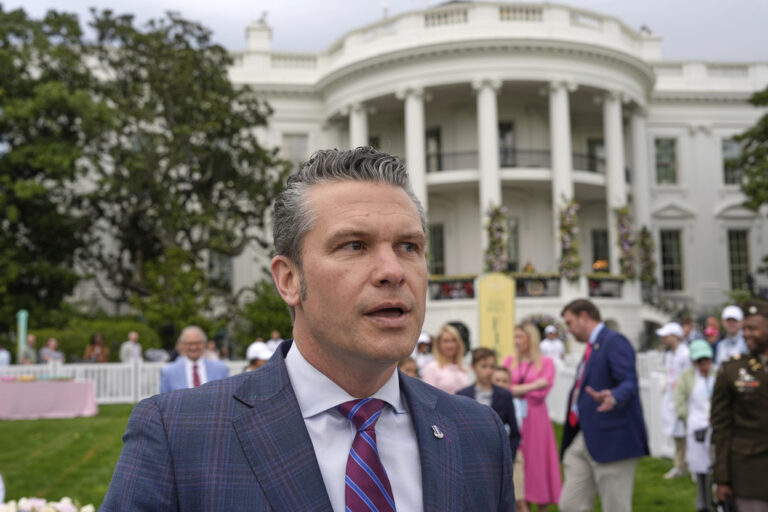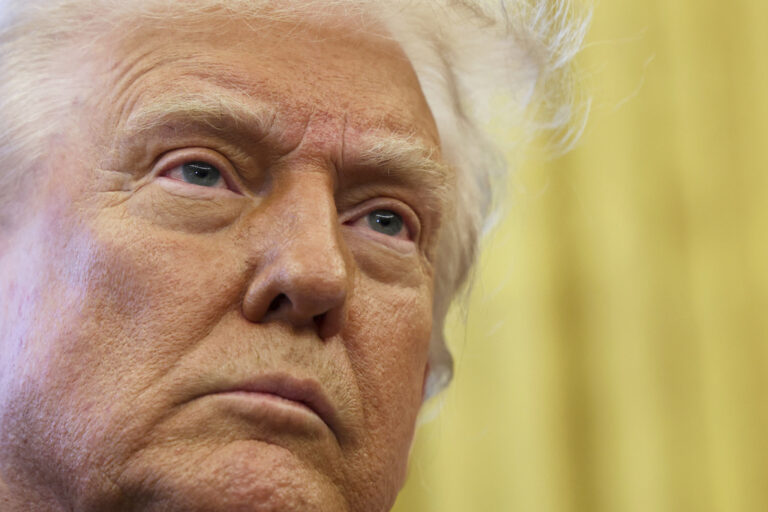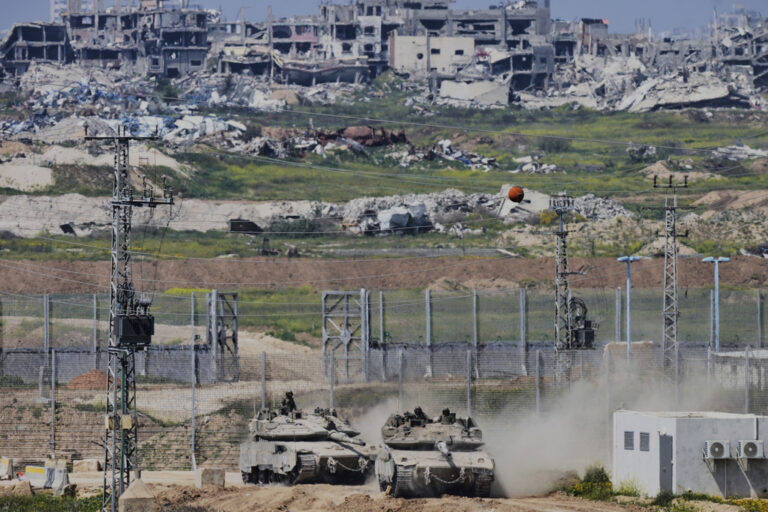Russian air defenses downed dozens of Ukrainian drones in occupied Crimea and southern Russia on Friday, officials said, as Kyiv pressed its strategy of targeting the Moscow-annexed peninsula and taking the 22-month war well beyond Ukraine’s borders.
Air raid sirens wailed in Sevastopol, the largest city in Crimea, and traffic was suspended for a second straight day on a bridge connecting the peninsula, which Moscow seized illegally a decade ago, with Russia’s southern Krasnodar region. The span is a crucial supply link for Russia’s war effort.
The Russian Defense Ministry said its defenses intercepted 36 drones over Crimea and one over Krasnodar, part of an emerging pattern of intensified Ukrainian aerial attacks in recent days.
A Ukrainian Neptune anti-ship missile also was destroyed over the northwestern part of the Black Sea, the ministry said.
The developments came after three people were injured Thursday night by other Ukrainian rocket and drone attacks on the Russian border city of Belgorod and the surrounding region, said Belgorod Gov. Vyacheslav Gladkov. On Jan. 6, Ukrainian attacks on Belgorod killed 25 people, officials there said.
Ukrainian President Volodymyr Zelenskyy has pledged to strike more targets on the Crimean Peninsula and inside Russian border regions this year. The goal is to unsettle Russians as President Vladimir Putin seeks another six years in power in a March 17 election.
Following a drone strike deep inside Russia last year, Zelenskyy said Ukraine had developed a weapon that can hit targets 700 kilometers (400 miles) away. He said last month Kyiv plans to produce 1 million drones, which have become a key battlefield weapon.
Other Ukrainian officials said it aims to manufacture this year more than 10,000 attack drones with a range of hundreds of kilometers, as well as more than 1,000 longer-range drones that can hit targets well behind the front line and inside Russia.
Both sides are raising the stakes of their long-range warfare as soldiers remain bogged down on the wintry battlefield. The U.K. Defense Ministry said Friday that “ground combat has continued to be characterized by either a static front line or very gradual, local Russian advances in key sectors.”
The Kremlin, meanwhile, has acquired ballistic missiles from North Korea and fired at least one of them into Ukraine on Dec. 30, the White House said Thursday, citing recently declassified U.S. intelligence. It also is seeking close-range ballistic missiles from Iran, National Security Council spokesman John Kirby said.
Asked about the development, Ukrainian air force spokesman Yurii Ihnat said in televised comments Friday that he couldn’t immediately confirm the use of the North Korean-supplied missiles, adding that experts need to study the fragments. Russian officials have refrained from commenting on previous U.S. claims that North Korea has supplied ammunition to Moscow.
Ukraine said it stopped 21 out of 29 Russian Shahed drones launched late Thursday and early Friday. The assault injured two people, including a 14-year-old, and was the latest of almost daily Russian drone attacks in the new year.
Zelenskyy thanked Germany late Thursday for a delivery of military aid, especially air defense materiel that he said “is timely and focused on our priorities.”
Ukraine “should look to continue degrading Russia’s ability to wage war by conducting an escalating campaign of airstrikes on targets far behind the front lines throughout occupied Ukraine and inside Russia itself,” according to Mykola Bielieskov, a research fellow at Ukraine’s National Institute for Strategic Studies.
“This could include attacks on troop concentrations, military bases, and munitions stores along with logistical hubs and armament production facilities,” he wrote in an assessment published by the Atlantic Council, a U.S. think tank.
(AP)

